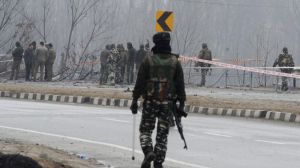Govt to merge health schemes
With the international community expressing concern about the high maternal and infant mortality in India, Union Health Ministry is looking ...

With the international community expressing concern about the high maternal and infant mortality in India, Union Health Ministry is looking at inter-ministerial partnerships to tackle the problem. Instead of running parallel programmes the ministry and the Department of Women and Child Development have decided to converge at the village level.
The plan is to make anganwadis the focal point of all the mother and child-related healthcare activity in the village. The convergence will help provide a package of services like nutrition, immunisation, health checkups and nutritional education to pregnant mother and children below six under one roof.
The National Rural Health Mission (NRHM) and the Integrated Child Development Scheme (ICDS) will now work together. The aim is to integrate the different services for maximum impact—so that no pregnant mother and child is missed.
‘‘Both the ministry and the department used to do the same work. Now there will be no overlap,’’ said a Health Ministry official.
The ICDS will be expanded to cover all the anganwadis in the country supported by the NRHM (the current Plan has created an additional 1.88 lakh anganwadis). With the convergence, the programme would be run by NRHM’s three A’s—anganwadi worker, auxiliary nurse and midwife and Ashaa, the village health worker.
The ICDS was conceived in 1975 with an integrated delivery package of early childhood services so that their synergistic effect can be taken full advantage of. Its focus was improving the nutritional and health status of vulnerable groups, including pre-school children, pregnant women and nursing mothers by providing supplementary nutrition, pre-school education, immunisation, health check-up, referral services and nutrition & health education.
While the Health Ministry has an inter-ministerial committee monitoring the scheme at the national level, monitoring and coordination committees from both the departments will be set up at the state, district and village levels.
Photos





- 01
- 02
- 03
- 04
- 05


























